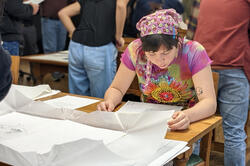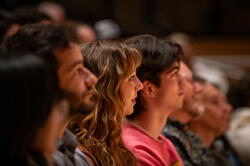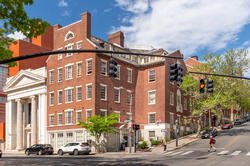About Liberal Arts
In addition to its studio disciplines, the idea of “the arts” at RISD also encompasses the humanities and social science fields that make up the liberal arts. Established as an academic division in 1940, today Liberal Arts teaches RISD students the communication and critical inquiry skills essential to creative practice, as well as an understanding of life’s aesthetic and ethical dimensions.
Liberal Arts departments and programs
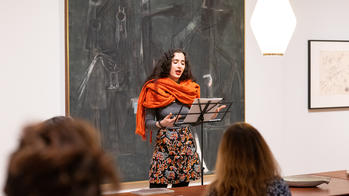
Uniting the humanities and social sciences with studies in visual, performative and literary arts, this interdisciplinary graduate program fosters inquiry into making in relation to systems of power and resistance.
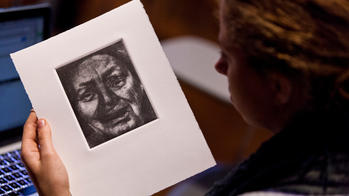
The HPSS department offers a range of courses on the nature of human life, past and present. The curriculum spans many disciplines, from anthropology and religion to political science and American studies.
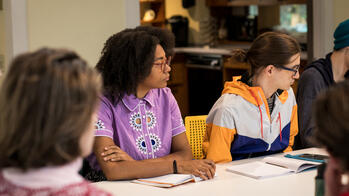
The courses students take in the LAS department give a basis for engaging in culture as artists, designers, writers, performers and citizens.

An NCSS concentration provides an opportunity for students to shape individualized courses of study focused on environmental issues, within the context of art and design education.
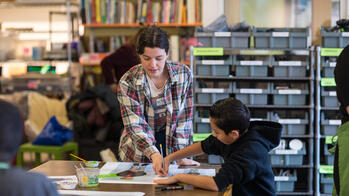
Offering a Master of Arts (MA) and Master of Arts in Teaching (MAT), this graduate-level department fosters innovative teaching in art and design within and beyond traditional education settings.
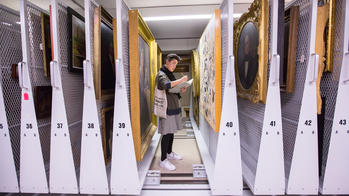
Spanning time periods and embracing diverse perspectives, THAD department courses offer a deeper understanding of artistic expression across cultures and throughout history.
A timeline of the division
From as early as 1901, when students in architecture and modeling programs were required to take courses in art history and English, to 1956, when RISD leaders cited the importance of the humanities in training students for leadership in their fields, liberal arts courses have played a significant role in the RISD curriculum.
(For a brief visual history of Liberal Arts at RISD, scroll through the images below and click the “I” at the upper-right corner of each frame.)
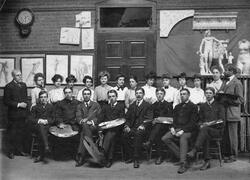
1880s
RISD begins to hire instructors with expertise in art history and mathematics to support its programs in normal art (art education) and architecture.
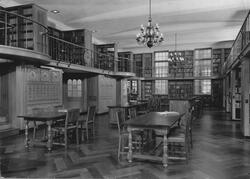
1930s
RISD establishes its first formal liberal arts-oriented programs to support its first degree, the bachelor of art education. This leads to the founding of the Liberal Arts division in 1940.
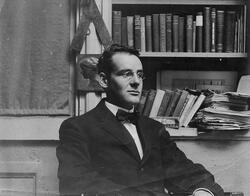
1950s
RISD President John R. Frazier initiates a decade-long effort to increase required liberal arts study at RISD, citing study in the humanities and sciences as “essential if one is to successfully relate oneself and one’s work to the society in which we live.”
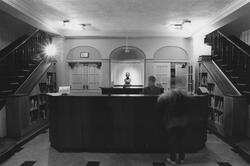
1960s
In response to student complaints and expressed frustrations among some studio faculty, Liberal Arts requirements are reduced for both undergraduate and graduate degrees. This is part of a wider agitation for more student choice in higher education during the 1960s.

1980s
The role of liberal arts at RISD is the subject of much debate, with review committees, faculty and students wrestling with how—and how much—liberal arts study should be offered to students.
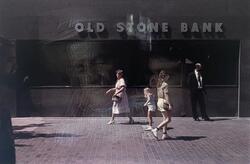
1990s
Responding to direction from its accrediting body, the National Association of Schools of Art and Design, in 1991 RISD reestablishes 42 required credits of liberal arts study, and begins to establish degree concentrations.
Get to know Liberal Arts
Explore Liberal Arts offerings, understand your requirements and discover how these courses will enrich your RISD education.
In our graduate-level programs, you acquire and develop diverse multidisciplinary methodologies at the intersection of the humanities, social sciences and art and design practices.
Learn about how your Liberal Arts advisor can support you at RISD, including how to navigate course requirements and explore Liberal Arts concentrations.
